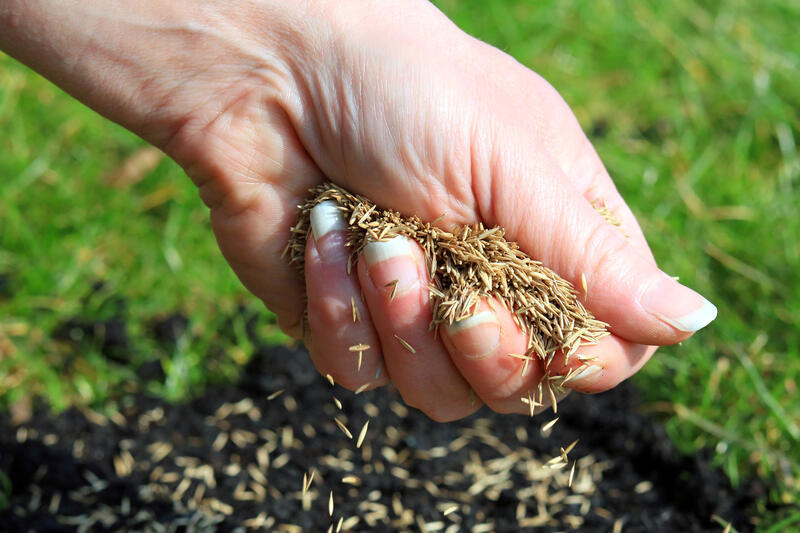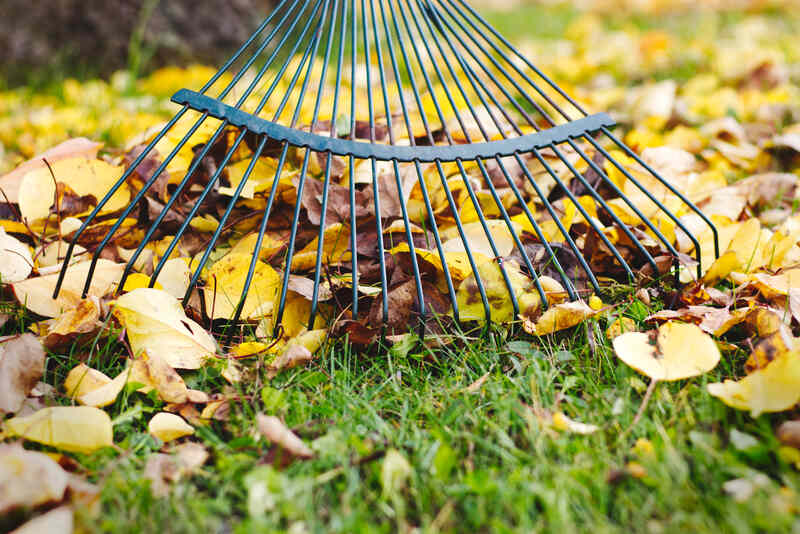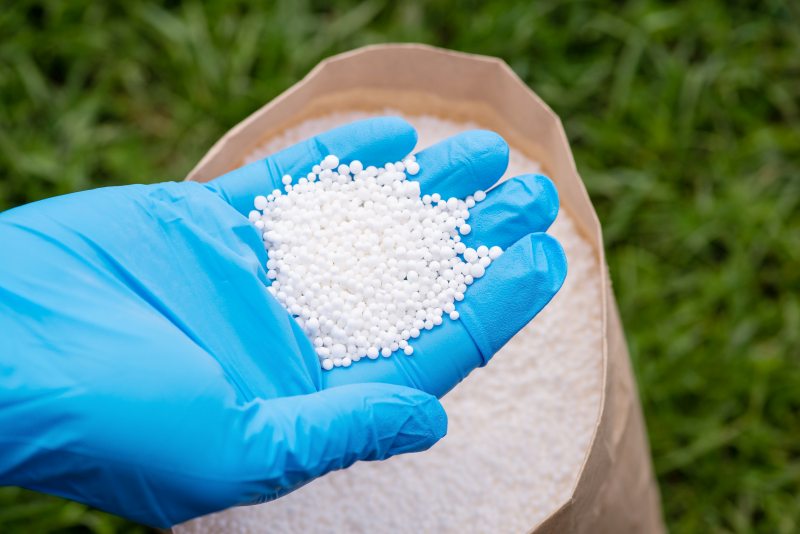
Early fall and late spring are the best times to seed your lawn in Fargo, and the best seeds for this chilly climate are Kentucky bluegrass, perennial ryegrass, and fescues.
A lawn can make or break your home’s curb appeal. From preparing the soil and planting grass seeds to fertilizing and watering your turf, you should seed grass correctly for a vibrant and healthy yard. Here’s a detailed guide to lawn seeding in Fargo.
The Best Grass Seeds for Fargo
Choosing the right grass is key to a vibrant and healthy lawn. Fargo has warm summers and cold winters, which is ideal for cool-season grasses. Here are the best grasses for Fargo lawns:
- Kentucky bluegrass: A soft, dense turfgrass with high maintenance needs.
- Perennial ryegrass: A wear-tolerant and quick-establishing grass with low drought tolerance.
- Tall fescue: A cold-, heat-, and drought-tolerant grass that requires frequent mowing.
- Fine fescue: A low-maintenance grass perfect for shade but susceptible to foot traffic.
Check out our North Dakota grass guide to learn more about these and other suitable species for the state.
When to Seed My Fargo Lawn
Fall is the best time to plant cool-season grasses because their growth peaks when the temperature is between 50 and 65 degrees Fahrenheit. However, the exact time varies depending on the type of grass.
- Kentucky bluegrass: Early fall or spring is the best time to plant this grass. It spreads quickly because of rhizomes but takes between 14 and 28 days to germinate, which is more than other cool-season grasses.
- Perennial ryegrass: The best time to plant this grass is early fall or spring. It germinates quickly in less than 10 days but takes longer to spread because it’s bunch-forming.
- Tall fescue: This grass is best planted in early fall. It takes longer to spread because it’s bunch-forming. However, it germinates and establishes relatively quickly.
- Fine fescue: Early fall is the best time to plant this grass. It germinates quickly but takes longer to spread because it’s bunch-forming.
Check out these seasonal lawn care tips for North Dakota that contain everything you need to know to keep your lawn looking good throughout the year:
How to Seed a New Lawn
If you’re establishing a new lawn, you have two options: seed or sod.
Seeding is sowing seeds in the soil, while sodding is transplanting grass for instant coverage. If you want a lush lawn in just a few hours, sodding should be your choice. However, it’s significantly more expensive and has limited grass options.
1. Prepare the Soil
Good soil is crucial for a lush, healthy lawn. We recommend preparing the seedbed at least two months before planting the grass so you get enough time to test the soil and add any amendments.
Here’s how to prepare the soil:
- Remove weeds: Hand-pull or use a hand weeder to get rid of weeds from your lawn. Never leave the roots behind because weeds can show up even if they get the slightest chance. Here’s a detailed guide on removing weeds.
- Get rid of debris: Remove fallen leaves, branches, and other debris to create a clean surface for the proper distribution of seeds.
- Level your lawn: Fill low spots with a 50-50 sand and topsoil mix. Also, ensure your lawn slopes an inch or two away from your home’s foundation. Excess sloping can cause runoff. Here’s a detailed guide on leveling a lawn.
- Test the soil: Test your soil to ensure it has all the nutrients for the grass to grow healthy. You can test the soil with a DIY kit or send it to a local testing laboratory. Here’s a detailed guide on how to test soil.
- Adjust soil pH: The ideal soil pH is 6.0 to 7.5. If the pH is higher (alkaline soil), treat it with elemental sulfur. If it’s lower (acidic soil), treat it with lime.
- Add nutrients: Fertilize your soil with organic matter like compost, aged manure, leaf mold, and peat moss to improve texture.
2. Plant Grass Seed

Buy the right amount of grass seed to cover the entire lawn. The bag indicates the pounds required per 1,000 square feet.
If your lawn is square or rectangular, multiply the length and width to determine its size. However, if your yard is triangular or circular, break it down into different square or rectangle sections and then add the measurements. Purchase a little more grass seed than needed to reseed any bare spots.
Now it’s time to get your hands dirty and plant the grass. If your lawn is less than 5,000 square feet, you can hand-seed. Use a drop spreader if your lawn is 10,000 to 30,000 square feet. If your lawn is over 30,000 square feet, use a broadcast spreader because it spreads seeds widely.
Here’s how to use a spreader:
- Fill the spreader with grass seed and set it to disperse seeds according to the recommended rate mentioned in the packing.
- Overlap each pass slightly to avoid gaps or uneven coverage.
- Spread half the seed in one direction (north to south) and the remaining half perpendicular to the first direction (east to west).
- Lightly rake the seeded surface with the back of a garden rake to help the seed settle into the soil.
- Apply a layer of wheat straw over the seeds to hold them in place and help retain moisture.
Note: Avoid sowing on a windy day because the wind will scatter the seeds unevenly.
3. Apply a Starter Fertilizer
Starter fertilizers are made for new grass just as their name suggests. They help seedlings develop strong roots and sprout faster. Here’s how to fertilize your lawn:
- Nitrogen, phosphorus, and potassium (NPK) are the primary nutrients in a fertilizer. Initially, choose a fertilizer with higher nitrogen and phosphorus levels for a strong root and green lawn. NPK ratio of 10-10-10 or 12-8-8 works well as a starter fertilizer for Fargo lawns.
- Fertilizers come in granular or liquid form. Granular fertilizers are a better choice because they are slow-release. You can use a drop or broadcast spreader to apply fertilizer. Ensure it’s evenly distributed across the turf.
- Water your lawn well to ensure the fertilizer reaches the soil. We recommend reading packaging instructions to know whether you should water your grass immediately after applying fertilizer or later.
Here’s a detailed guide on lawn fertilization in Fargo.
4. Water Your Grass

Properly watering your lawn is crucial for a healthy and vibrant lawn. During the initial growth stage, you should water your turf frequently to keep the soil moist, but don’t overwater. Overwatering can wash the seeds away.
Here’s the watering schedule for newly planted Fargo lawns:
- First and second week: Water your lawn two to three times a day for 10 to 15 minutes each session to keep the soil and seed moist.
- Fourth and fifth week: Water two to three times a day but increase the duration to 20 to 30 minutes per session.
- Fifth to eighth week: The grass would have been established by now. You can reduce the watering frequency to two to three times every other day for 20 to 30 minutes per session.
Pro tip: Early morning (5 a.m. to 9 a.m.) is the best time to water your lawn. If you water later, it evaporates faster, and watering at night can invite pests and diseases.
5. Mow at the Right Time

Your newly seeded grass has been established. Hooray! Mowing stimulates your grass to grow thicker and taller. However, wait until your turf reaches a certain height before giving it the first mow.
| Type of Grass | Height Before First Mowing |
| Kentucky bluegrass | 2 – 2.5 inches |
| Perennial ryegrass | 2 – 3 inches |
| Tall fescue | 2 – 3 inches |
| Fine fescue | 2 – 3 inches |
Here are some tips on how to mow your lawn the right way:
- Sharpen lawn mower blades
- Avoid cutting more than one-third of the grass in one mow
- Don’t get the mower too close to trees and flower beds
- Take breaks when necessary
Avoid walking extensively on newly seeded yards because the tender young seeds and shoots can’t handle heavy foot traffic. Also, remove weeds by hand as soon as they show up to prevent them from competing with grass seeds. Don’t use pre-emergent herbicides because they can slow seed germination.
How to Overseed an Existing Lawn
Overseeding is spreading grass seeds over an existing lawn to fix damaged grasses and bare spots. Here’s how to overseed:
1. Mow the Grass Short
Mow your grass shorter than usual, down to an inch or more, to ensure seeds reach the soil. Bag grass clippings as you mow to ensure they don’t get between the soil and seeds.
2. Rake

Rake your lawn to remove grass clippings, fallen leaves, and other debris that prevent seeds from accessing the soil. Dig the ground when raking to loosen the top layer of the soil for seeding.
3. Amend the Soil
Apply enriched topsoil, which contains a mixture of nutrient-rich compost and soil, to help the new grass grow quicker and thicker. Use a spreader to apply enriched topsoil.
4. Plant Grass Seed
Overseed your lawn with the same type of grass you have or with a compatible type (cool-season with cool-season). Here’s our overseeding recommendation for Fargo:
| Type of Grass | Overseeding Grass | Ratio |
| Kentucky bluegrass | Tall fescue | 90:10 |
| Perennial ryegrass | Kentucky bluegrass | 75:25 |
| Tall fescue | Kentucky bluegrass | 75:25 |
| Fine fescue | Kentucky bluegrass | 75:25 |
Spread seeds by hand if you’re overseeding a small area. Use a drop spreader for larger areas.
5. Apply a Starter Fertilizer

Fertilize your new grass with starter fertilizer to help the seedlings develop strong roots, sprout faster, and prevent weeds. Use a drop or broadcast spreader to fertilize your turf.
6. Water Your Turf
Water your new grass generously to help it grow strong and healthy. In the first and second week, water your lawn two to three times a day for 10 to 15 minutes each session. Do the same in the fourth and fifth weeks, but increase the duration to 20 to 30 minutes per session.
The grass will be established by the fifth week. Therefore, you can reduce the watering frequency to two to three times every other day for 20 to 30 minutes per session. Continue till the eighth week.
7. Protect Your Lawn
Avoid walking on the newly seeded area till the grass has grown to at least two inches. Also, wait to mow the lawn until the new turf reaches the same height as the established grass.
Cost of Planting Grass Seed in Fargo
DIY seeding costs $149 to $449, including grass seeds, fertilizer, and other tools needed. Planting grass seed in Fargo can cost you between $0.06 and $0.12 per square foot if done by pros.
If you want a lush lawn instantly, you can install sod. The cost of sod installation in Fargo ranges from $936 to $4,239, depending on the type of grass and size of your yard.
FAQs
Should I cover grass seed?
You can cover grass seed with a shallow layer of wheat straw to keep the seed in place and help retain moisture. Check out our article on the pros and cons of putting straw on grass seed.
Can I use a pre-emergent herbicide?
You can use a pre-emergent herbicide after your new lawn has been established. However, avoid applying it before seeding or when your grass spreads because it prevents the seed from germinating.
What are common lawn diseases in Fargo?
- Dollar spot
- Fairy ring
- Stripe smut
- Red thread
- Powdery mildew
- Fusarium blight
Maintain your lawn properly to prevent common lawn diseases and pests.
What’s the best time to aerate my Fargo lawn?
Aeration relieves compacted lawns by punching tiny holes into the soil. Late summer to early fall is the best time to aerate Fargo lawns.
When to Hire a Professional
Fargo is home to Red River Zoo, Lindenwood Park, and Thunder Road Amusement Park. Living here, it’s understandable that you’re tempted to spend your weekends with family exploring the beautiful city. Let LawnStarter pros seed your lawn and take care of it while you’re outside having fun.
Main Image Credit: rades / Adobe Stock
LawnStarter participates in the Amazon Services LLC Associates Program, an affiliate advertising program. LawnStarter may earn revenue from products promoted in this article.